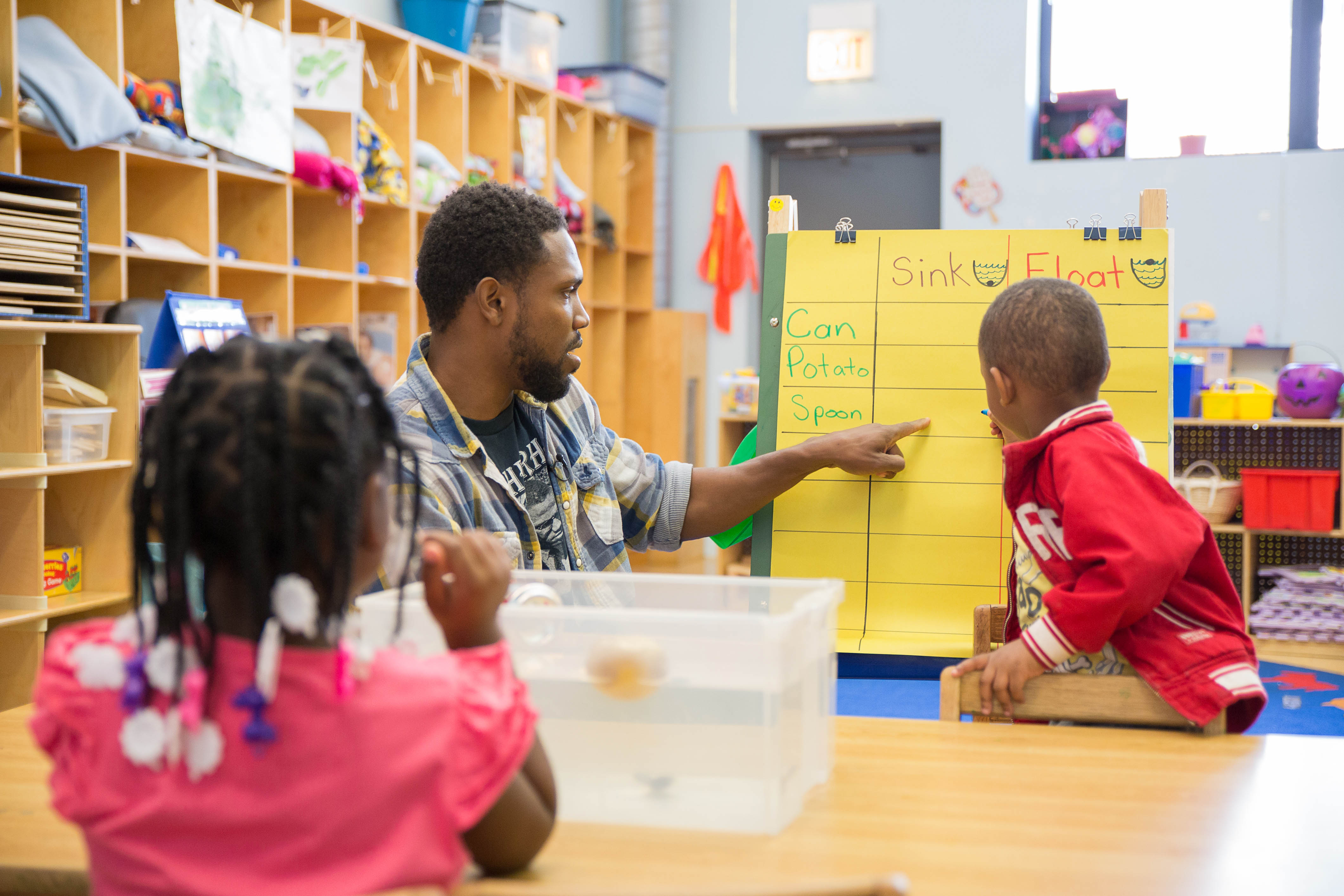Starting in the classroom: A curriculum shaped by Washington’s early childhood teachers
By Kayah Swanson, Deputy Director of Communications for Cultivate Learning

A good curriculum can make a world of difference for early childhood educators, no matter their teaching environment. And research suggests that using curriculum positively impacts children’s learning outcomes.
But for many, this crucial tool is out of reach.
Curriculum costs can be staggering, meaning educators can’t afford to use them. Even when they can afford a curriculum, it’s often one-size-fits-all, meaning it’s not usable in every learning environment or with every child.
The access gaps these issues create are a big problem.
“Having a good curriculum is so important because children all develop at different rates and you have to adapt activities in different ways – sensory, fine motor, all their ways of learning,” said Natale O’Regan, owner and director of Sunset Scholars Early Learning. “Having something as a road map to help foster the teamwork between the teacher, environment and the students makes all the difference in the classroom and to the students’ learning experience.”
Fortunately, a new project from Cultivate Learning at the University of Washington and the Washington State Department of Children, Youth, and Families (DCYF) is looking to change the landscape for good. They’re working with educators across the state to coauthor a free, easy-to-use curriculum for any early childhood environment.
The curriculum will center on early childhood development, serving children from birth to five and engaging families as essential partners. It’s being codeveloped in Spanish and Somali – the two most spoken languages other than English in Washington’s early learning communities – to ensure accessibility and cultural relevance. Plus, it will be completely customizable for educators working in any type of program, including for those caring for children of different ages in a shared learning environment. And above all, it will be fun, engaging and easy-to-use.

It’s a tall order. But luckily, the team is comprised of just the right people for the job: the very educators who will end up using the curriculum, coauthoring the materials right alongside the researchers and early childhood experts at Cultivate Learning.
That, Cultivate Learning’s staff agrees, will be the secret to the curriculum’s success.
“The best curriculum comes from the wisdom of educators who know what works with their children and families in their communities,” said Gail Joseph, Ph.D., Founding Executive Director of Cultivate Learning and Bezos Family Professor of Early Learning. “By codeveloping with early learning professionals from across the state – center-based and family homes, rural and urban – we ensure the curriculum is practical, usable, and tested in real settings.”
The design team consists of a diverse group of people with decades of teaching experience, who now focus on research and curriculum design, all partnering with those working in a wide variety of child care environments now.
That may sound like too many cooks in the kitchen. But everyone on the team agrees: developing the curriculum with each of those voices represented is essential to the project’s success.
“You can have wonderful ideas for curriculum, but if it’s been a while since you taught, it’s just different,” said Christy Cole, developmental preschool teacher for Olympia School District and member of the curriculum design team. “I work with students with developmental disabilities and I have to be able to flex. I can share the knowledge of how to finesse a curriculum to make it work with my kids.”
All too often, educators are excluded from the design process entirely and those on the team say they’re grateful for the chance to piece together a curriculum suited to their own needs.
“I’ve had a lot of fun being part of this project,” said O’Regan, who is also a member of the curriculum design team. “Designing a curriculum like this has always been a bucket list type item for me, so it’s been wonderful to be a part of.”
The team knows that no two early childhood education settings look alike, so the curriculum will be customizable for educators who have multiple ages of children in one room, teach in a traditional classroom or in a family home environment, serve multilingual children and families and more.
Staff at Washington’s DCYF say they were excited to collaborate with Cultivate Learning on this project.
“When we were awarded the Preschool Development Grant funds for this curriculum project, we decided to collaborate with Cultivate Learning because we knew they would help facilitate a multilingual curriculum with input from the communities most in need, create innovative new ways in which to deliver the curriculum content and ensure that the curriculum is cost effective for providers,” said Kelli Heikkila, Quality Rating and Improvement System Administrator for DCYF.
But why this curriculum? Why now? The state says early childhood educators in Washington state have wanted something like this for a long time.
"Over the last ten years, we have heard from early care and education providers that they want a cost effective, multilingual and accessible curriculum that is easy to use and takes into account their own teaching style and culture,” Heikkila said. “When the opportunity to apply for the Preschool Development Grant funds arose, we knew that this was a project that could really benefit all early care and education providers throughout Washington state.”
Though the project is still in the early stages, the curriculum design team is already thinking about the heavy workload of early childhood educators. Between the incredibly important tasks of managing the health, safety and learning of children with varying needs throughout the day, lesson planning, managing relationships with parents, staying up on the emerging research and best practices for childhood development, and administrative tasks, working as an early childhood educator is not for the faint of heart. Adding a new curriculum on top of that staggering to-do list may sound like it could be an educator’s last straw.
But really, a good curriculum is anything but a chore.

“When you have to come up with activities and other pieces for each day, it is so time consuming,” said Cole. “When you’re given a good curriculum, you can spend five minutes reviewing it to learn how to use it in your classroom instead of spending 25 minutes doing your own research. That’s what we want to do for teachers”
So what does such a customizable curriculum look like in practice? The team says it’s all about providing a foundation of best-in-class research and practices for educators to use, but breaking that research down into something approachable, allowing them to meld it to the needs of their unique learning environment.
The curriculum is centered around children’s books. Each lesson plan pairs those books with an outline, identified learning outcomes and several built-in options for customization. That framework will help spark an educator’s ideas, building on their training to create a meaningful day of learning for their unique classroom.
“Rather than the words on the paper, it’s how you put those lesson plans into action in the lives of the children that matters,” said Chris Sciarrino, director of Cultivate Learning’s curriculum design team. “We want to make those types of nuanced interactions come alive, so teachers know when they have those moments, they’re doing so much more than teaching a curriculum. That is the learning in action.”
The curriculum is still in development. The team is slated to complete this much-needed product in 2026.
And for a group of people used to working with the wonderful busyness and bustle that a classroom full of children can bring, boiling all this complexity down into something basic, adaptable and easy to use is simply all in a day’s work.